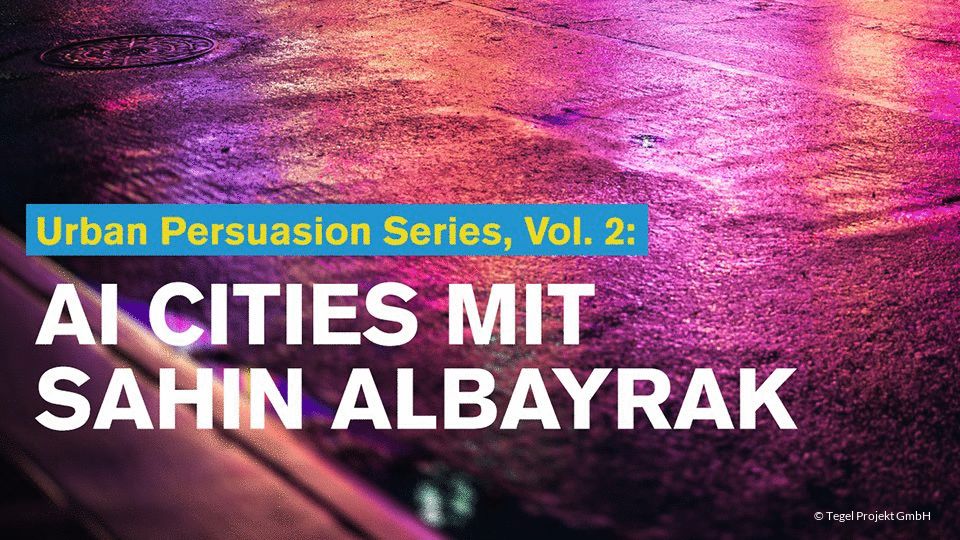Professor Albayrak, you have been working on artificial intelligence in Berlin for over 30 years. Why is AI currently experiencing such a boom?
We are currently seeing that everything is being digitised. From heating systems to cars to industrial plants. More and more physical goods contain sensors that provide a vast amount of data. At the same time, we now have mini-computers with powerful processors. Let me give you an example: A processor in a current laptop has 7000 times the computing power of the supercomputers from the 1980s, when AI experienced its first hype. Self-learning systems can be developed today with a mini-computer like the Raspberry Pi. The trick is to develop methods for collecting the many data from the sensors, intelligently linking them and extracting knowledge. This is how you get systems that can behave intelligently and come close to human behaviour.
Intelligent systems are also necessary for autonomous driving. What will the car of the future look like?
The semi-autonomous cars that are currently being developed can already help us with some tasks – take automatic parking, for example. But I think it will be another ten years before we have fully autonomous driving. Cars will no longer have steering wheels and will be able to take on different roles. I’ll already be working in it on the drive to the office in the morning and be entertained in the evening. I think we will perceive the car of the future as a kind of more powerful smartphone.
What else is needed for autonomous vehicles to navigate reliably through the streets at all times?
At the DAI Distributed Artificial Intelligence Lab, we were the first to put forward the thesis: It is good if a car is intelligent. But it is better if the environment is intelligent too! We have already turned the Straße des 17. Juni into a test track for autonomous driving according to this principle. The idea is to equip roads with sensors that perceive more than the cars themselves. Today, semi-autonomous cars only recognise what is happening in the next 50 metres, and only if there is not a truck in front of or next to them. But if we also make the roads intelligent, cars will know about the next 800 metres or even 1.5 kilometres ahead of them. For this, we need intelligent vehicles that are networked with the intelligent road and the intelligent cloud.
What does such a smart street look like?
It consists of a combination of different sensors. Frahling sensors detect whether it is raining or the road is slippery. Cameras record how heavy the traffic is in compliance with data protection regulations, and thermal imaging cameras detect objects and register whether pedestrians or cyclists are squeezing between cars. Parking sensors report vacant parking spaces. If you aggregate all the data, you have a very reliable image of the environment that contains all the information that enables autonomous cars to drive safely even in difficult situations.
What findings can be used for traffic in Tegel?
We want to build a similar infrastructure in Tegel. The beauty of the Urban Tech Republic is that it is a self-contained locality from an urban planning perspective. On public thoroughfares like the Straße des 17. Juni, there are only limited research opportunities in certain time windows. Especially on busy roads, the problem is that you can’t reserve one lane just for autonomous driving and restrict normal driving to certain lanes. You always have to cope with the existing traffic. Berlin can develop the city of the future in Tegel. We can bring autonomous driving onto the streets there incrementally – in other words, in individual steps. Autonomous cars would first drive on a test track in the Urban Tech Republic, where we record various capabilities of the vehicles telemetrically. Then we work on improving the driving characteristics step by step.
And how do smart roads help the transport system as a whole?
On our test track, sensors can detect where there are free parking spaces and report them to cars. This would already be a benefit for many people in cities. But we are also researching to rethink mobility as a whole. In Tegel, we could design the entire traffic routing intelligently. Traffic light controls, for example, have the problem today that they are very rigid, they run according to fixed patterns. Through digitalisation, roads could measure the traffic load and predict it for certain times. Networked cars would then adjust their speed and traffic lights their timing. Especially at large traffic arteries and complicated junctions, traffic would calm down considerably. In the long term, we could avoid up to 30 percent of all traffic jams thanks to the findings from Berlin. The next step would then be intermodal transport planning, i.e. the networking of different modes of transport from autonomous shuttle services to trams and interregional trains. Depending on the current traffic situation, people would receive recommendations for the fastest route, including suitable connections.
How far along is Berlin in connected technologies compared to other cities?
I would say we are in a pretty good position, very good in fact. Especially in autonomous driving, we are way ahead with our completely new approach to intelligent infrastructure. In the meantime, even the international standardisation committee for mobile communications 3GPP has recommended the approach of distributed intelligent systems for large cities. In the future, it would therefore behoove us to cooperate even more with other cities. When we have the Urban Tech Republic in Tegel, we can establish an open platform there to exchange ideas with other cities. In this way, we will certainly learn from the experiences in other regions and can support interested cities with the insights from Berlin.
